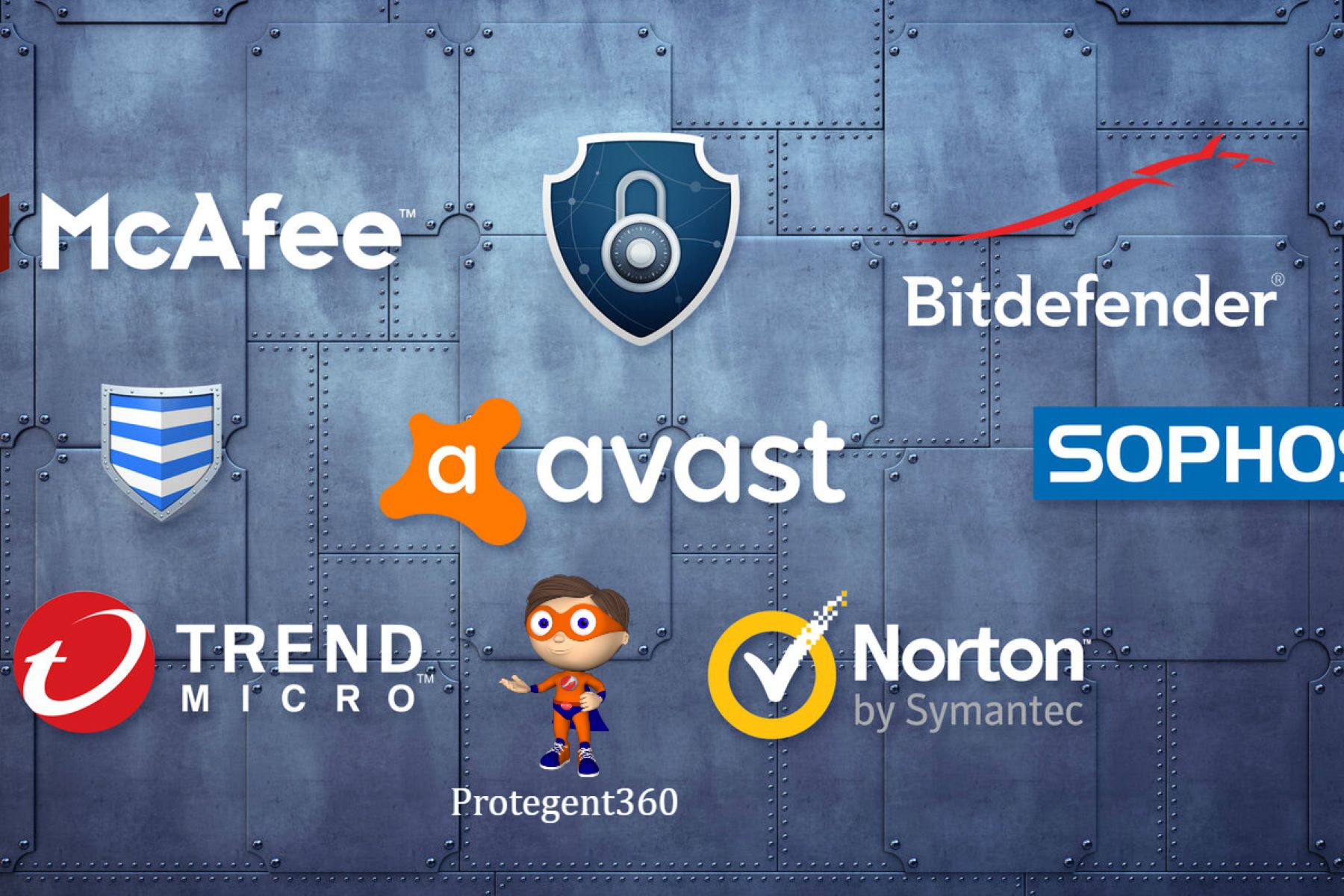Introduction
When it comes to protecting our computers and devices from malicious threats, antivirus software plays a crucial role. But have you ever wondered how these programs work? What model do they operate off of to detect and remove viruses? In this article, we will explore the basics of antivirus software and the various models they utilize to keep our systems safe.
Antivirus software is designed to detect, prevent, and remove malicious software, such as viruses, trojans, and worms, from our devices. It acts as a digital shield, safeguarding our sensitive information, ensuring system performance, and preserving the overall integrity of our digital environment.
To accomplish these tasks, antivirus software relies on different detection techniques and models. These models work together to identify and neutralize threats in real-time, providing constant protection against evolving malware.
By understanding the models behind antivirus software, users can have a better grasp of how these programs provide security and make informed decisions when selecting the right software for their needs.
In the following sections, we will explore some of the key models that antivirus software operates off of:
The Basics of Antivirus Software
Before delving into the specific models, it’s important to understand the fundamental workings of antivirus software. At its core, antivirus software utilizes a combination of techniques and algorithms to detect and eliminate malware.
The primary function of antivirus software is to scan files and programs for known patterns or signatures of malicious code. This approach, known as signature-based detection, involves comparing the files against an extensive database of known malware signatures. If a match is found, the software takes action to quarantine or remove the infected file.
In addition to signature-based detection, modern antivirus software incorporates advanced techniques to tackle new and unknown threats. One such technique is heuristic analysis. Heuristics involves analyzing the behavior and attributes of files and programs to identify potentially malicious patterns. By employing a set of rules and algorithms, antivirus software can detect suspicious behavior, even if no signature matches are found.
Another key aspect of antivirus software is behavioral analysis. This approach monitors the behavior of programs and processes in real-time and looks for any abnormalities or suspicious activities. For example, if a program starts modifying system files or attempting to access sensitive information without authorization, the antivirus software can flag it as a potential threat and take appropriate action.
Antivirus software also utilizes sandbox analysis, a technique that allows potentially harmful files or programs to run in an isolated environment. This controlled environment enables antivirus software to observe and analyze the behavior of the file without risking damage to the actual system. If any malicious behavior is detected within the sandbox, the software can take immediate action to neutralize the threat.
With the advancement of artificial intelligence and machine learning, antivirus software is also incorporating these technologies into their models. Machine learning algorithms study vast amounts of data to identify patterns and anomalies that may indicate the presence of malware. This improves the software’s ability to detect and adapt to new and emerging threats.
Lastly, many antivirus software solutions now leverage cloud-based detection. This involves relying on cloud servers to process and analyze potentially malicious files. By offloading the analysis tasks to the cloud, antivirus software can benefit from the computational power and constantly updated threat intelligence provided by the cloud infrastructure. This allows for faster and more accurate detection of new and evolving threats.
Now that we have a grasp of the basics of antivirus software, let’s explore these models in greater detail and understand how they work together to protect our devices from the ever-evolving landscape of malware.
Signature-Based Detection
Signature-based detection is one of the fundamental models used by antivirus software to identify and remove known malware. This approach relies on a vast database of pre-defined signatures, also known as virus definitions or patterns.
When antivirus software scans a file or program, it compares the unique codes and patterns within it against its signature database. If a match is found, the software recognizes the file as infected and takes appropriate action, such as quarantining or deleting it.
This model is effective in detecting well-known and widely-distributed malware. However, it does have limitations. Signature-based detection struggles with new or previously unseen threats that don’t have a known signature in the antivirus database. In the constant cat-and-mouse game between malware creators and antivirus developers, new malware variants are created regularly, making it impossible to have signatures for all of them in real-time.
To address these limitations, antivirus software companies frequently update their signature databases to include the latest malware samples and distribute these updates to their users. By keeping the signature database up to date, the software can detect and prevent the spread of new threats.
Despite its limitations, signature-based detection remains a crucial component of antivirus software. It efficiently detects and removes known malware, providing an essential layer of protection for users.
Some advanced antivirus solutions combine signature-based detection with other models, such as heuristic analysis, to improve their detection capabilities. By using multiple detection techniques in tandem, these antivirus programs can provide a comprehensive defense against both known and emerging threats.
In summary, signature-based detection is a key model in antivirus software that relies on a database of known malware signatures. While effective in detecting known threats, it may struggle with new and evolving malware. The constant updates to the signature database help keep the software up to date and capable of identifying the latest known threats, providing users with a level of protection against known malware.
Heuristic Analysis
Heuristic analysis is an important model used by antivirus software to detect and identify new and unknown threats. Unlike signature-based detection, which relies on pre-defined patterns, heuristic analysis takes a more proactive approach by analyzing the behavior and attributes of files and programs to identify potentially malicious patterns.
Antivirus software using heuristic analysis employs a set of rules and algorithms to evaluate files and programs for suspicious behavior. It looks for characteristics commonly found in malware, such as self-modifying code, attempts to disable security features, or unauthorized access to sensitive areas of the system.
When a file or program exhibits behaviors that match the predefined patterns, the antivirus software flags it as potentially malicious and takes appropriate action to contain the threat, such as quarantining or deleting the file.
The advantage of heuristic analysis is its ability to detect new and previously unseen malware. Since it doesn’t rely on fixed signatures, it can identify malware variants that have evolved to bypass traditional signature-based detection mechanisms.
However, heuristic analysis is not perfect. It can sometimes generate false positives, flagging legitimate files or programs as malicious. These false alarms can be disruptive and frustrating for users. To mitigate this, antivirus software vendors continually refine and update their heuristic algorithms to improve accuracy and reduce false positives.
By combining signature-based detection and heuristic analysis, antivirus software can provide a more comprehensive defense against known and unknown threats. When a file matches a known signature, it is quickly identified as malware. If a file doesn’t have a signature match, heuristic analysis comes into play, analyzing its behavior and attributes to determine if it poses a threat.
Overall, heuristic analysis is a valuable model in antivirus software that allows for the detection and prevention of new and evolving malware. It serves as a proactive defense, helping to identify threats that have not yet been added to the signature database, and significantly enhancing the software’s ability to protect users’ systems.
Behavioral Analysis
Behavioral analysis is a crucial model used by antivirus software to detect and prevent malware based on its actions and behavior. This approach involves monitoring the behavior of files, programs, and processes in real-time to identify any suspicious or malicious activities.
Instead of solely relying on known signatures or predefined patterns, behavioral analysis focuses on identifying behaviors commonly associated with malware. It looks for actions such as unauthorized modifications to system files, attempts to access sensitive information, or unusual network communications.
Antivirus software using behavioral analysis continuously monitors processes and programs as they run, observing their interactions with the system. Whenever a behavior that matches predefined malicious patterns is detected, the software takes appropriate action to isolate and neutralize the threat.
This model is effective in detecting and stopping malware that uses advanced techniques to evade other detection methods. By analyzing behavior, antivirus software can detect unknown threats that have not been previously identified or added to the signature database.
Behavioral analysis is particularly useful in detecting polymorphic malware, which can change its code or structure to avoid static signature-based detection. This type of malware often has altered signatures that enable it to go undetected by traditional methods. However, behavioral analysis can identify such malware by closely monitoring its activities and recognizing the suspicious behavior associated with malicious intent.
One limitation of behavioral analysis is the potential for false positives. The activities monitored by the antivirus software may sometimes resemble legitimate behaviors or actions, resulting in false alarms. To minimize false positives, antivirus software companies continuously refine their algorithms and rules based on the feedback and behavior patterns gathered from users.
In summary, behavioral analysis is a vital model used by antivirus software to detect and prevent malware by monitoring the behavior and activities of files, programs, and processes. This proactive approach allows antivirus software to identify and neutralize unknown threats that may bypass traditional signature-based detection methods. By combining behavioral analysis with other detection techniques, antivirus software offers a more comprehensive defense against evolving and emerging malware.
Sandbox Analysis
Sandbox analysis is a powerful model used by antivirus software to analyze potentially malicious files or programs in a controlled and isolated environment. By executing suspicious code in a sandbox, antivirus software can observe and analyze its behavior without risking damage to the actual system.
When a file or program is subjected to sandbox analysis, it is executed within a virtual environment that mimics the real operating system. This virtual environment is carefully designed to monitor and record all activities performed by the program, including file modifications, network communication, and system interactions.
During the sandbox analysis, the antivirus software closely watches for any malicious behavior or activities. If the program exhibits behaviors that indicate it is a threat, such as attempting to modify critical system files or accessing sensitive information, the antivirus software can take immediate action to neutralize the threat, such as terminating the program or quarantining the file.
Sandbox analysis is particularly effective in detecting new and unknown threats that may evade traditional detection methods. Since the analysis occurs in an isolated environment, malware cannot spread or cause harm to the actual system. This enables the antivirus software to study the behavior and characteristics of the malware without putting the user’s device at risk.
In addition to identifying malware, sandbox analysis also provides valuable insights into the behavior and techniques used by attackers. Antivirus software companies can analyze the data gathered from sandbox analyses to improve their detection algorithms and develop better defense mechanisms against emerging threats.
Despite its effectiveness, sandbox analysis does have some limitations. Advanced malware may be designed to detect and evade sandbox environments, altering its behavior to avoid detection. To mitigate this, antivirus software vendors continuously enhance their virtual environments and employ techniques to make the sandbox analysis more challenging for malware to detect.
Overall, sandbox analysis is an essential model in antivirus software that allows for the safe execution and analysis of potentially malicious files and programs. By closely monitoring the behavior of these entities within a controlled environment, antivirus software can identify and neutralize unknown threats while protecting the user’s actual system.
Machine Learning
Machine learning has revolutionized the field of antivirus software, enabling it to adapt and evolve in the face of ever-changing malware threats. Machine learning algorithms analyze vast amounts of data to identify patterns and anomalies that may indicate the presence of malware.
These algorithms learn from labeled examples, known as training data, which consist of both clean and malicious files. By analyzing the features and characteristics of these files, the machine learning algorithm can build a model that distinguishes between safe and malicious files.
Once the model is trained, the antivirus software can utilize it to classify new and unknown files. By comparing the features of these files against the learned patterns, the software can determine the likelihood of them being malware.
Machine learning-based antivirus software continuously refines its models through a feedback loop. When new malware emerges, the software collects and analyzes samples, improving its detection capabilities over time. This dynamic approach allows antivirus software to keep up with the evolving threat landscape and detect emerging malware.
One of the significant advantages of machine learning in antivirus software is its ability to uncover previously unknown or zero-day threats. Traditional signature-based detection relies on the availability of known signatures, which can take time to update. Machine learning, on the other hand, can identify new threats based on their characteristics, even if they have never been seen before.
However, machine learning is not infallible. It can still produce false positives and false negatives. False positives occur when the algorithm incorrectly labels a safe file as malicious, while false negatives happen when the algorithm fails to detect a malicious file. Antivirus software companies work to minimize these inaccuracies through continuous training and improvement of their machine learning models.
In summary, machine learning has transformed antivirus software by enabling it to learn and adapt to new and emerging threats. By analyzing large amounts of training data, machine learning algorithms can identify patterns and characteristics associated with malware, providing a dynamic defense against evolving threats. Although not perfect, machine learning-based antivirus software greatly enhances the ability to detect and neutralize both known and previously unseen malware.
Cloud-Based Detection
Cloud-based detection is a modern approach employed by antivirus software to enhance its detection capabilities by leveraging the power and resources of cloud computing. In this model, the analysis and processing of potentially malicious files or programs are offloaded to remote cloud servers instead of relying solely on local resources.
When a file is flagged as suspicious or requires further analysis, it is uploaded to the cloud server for evaluation. The cloud server performs in-depth analysis, utilizing a vast amount of computational power and access to real-time threat intelligence. This allows for a more comprehensive and accurate detection of malware.
Cloud-based detection offers several benefits. Firstly, it reduces the processing load on the user’s local system, resulting in improved system performance and reduced impact on system resources. The heavy lifting of scanning and analyzing files is done by the cloud server, ensuring minimal disruption to the user’s workflow.
Secondly, cloud-based detection provides real-time updates and access to the latest threat intelligence. Cloud servers continuously analyze and collect data on new and emerging threats, allowing the antivirus software to benefit from up-to-date information when scanning and analyzing files.
Another advantage of cloud-based detection is its scalability. Cloud infrastructure can scale on-demand to handle a large influx of files or increasing computational requirements. This flexibility ensures that the antivirus software can keep up with the growing volume of malware and the evolving techniques used by cybercriminals.
Additionally, the cloud-based model is ideal for collaborative threat detection and response. Data from multiple users can be anonymized and aggregated in the cloud, enabling the antivirus software to detect patterns and trends across a wider range of devices and networks. This collective intelligence enhances the overall effectiveness of threat detection and enables faster responses to emerging threats.
However, cloud-based detection also raises privacy and security concerns. Data sent to the cloud for analysis must be handled with care to protect users’ privacy and ensure the security of sensitive information. Antivirus software companies are committed to implementing robust security measures and adhering to strict privacy policies to address these concerns.
Overall, cloud-based detection is a powerful model in antivirus software that leverages the capabilities of cloud computing to enhance threat detection and response. By offloading resource-intensive tasks to the cloud, users can enjoy improved system performance, real-time threat intelligence, and scalable detection capabilities, leading to more effective protection against malware.
Conclusion
Antivirus software operates off various models to detect and remove malicious threats from our devices. By understanding these models, users can make informed decisions when choosing antivirus software and better understand how they provide security.
Signature-based detection is a foundational model that relies on a database of known malware signatures to identify and remove threats. While effective against known malware, it may struggle with new and emerging threats.
Heuristic analysis takes a proactive approach by analyzing the behavior and attributes of files to identify potentially malicious patterns. This model is particularly useful in detecting unknown threats and variants that evade traditional detection methods.
Behavioral analysis monitors the behavior of files, programs, and processes in real-time to detect suspicious activities that may indicate malware. It enhances the detection of both known and emerging threats by focusing on behavior rather than specific signatures or patterns.
Sandbox analysis allows potentially malicious files or programs to run in an isolated environment, enabling the antivirus software to monitor and analyze their behavior without risking damage to the system. This approach is effective in detecting and studying new and unknown threats.
Machine learning leverages algorithms that analyze large amounts of data to identify patterns and anomalies associated with malware. This approach enables antivirus software to adapt and detect emerging threats, even without specific signatures or patterns.
Cloud-based detection utilizes cloud resources for analysis and processing, reducing the load on local systems and providing real-time threat intelligence. This model offers scalability, improved system performance, and collaborative threat detection.
In conclusion, antivirus software operates off a combination of models that work together to provide comprehensive protection against malware. Signature-based detection, heuristic analysis, behavioral analysis, sandbox analysis, machine learning, and cloud-based detection all contribute to detecting and eliminating threats. The ongoing evolution of these models ensures that antivirus software is continuously improving its ability to protect users from new and emerging malware threats.

























